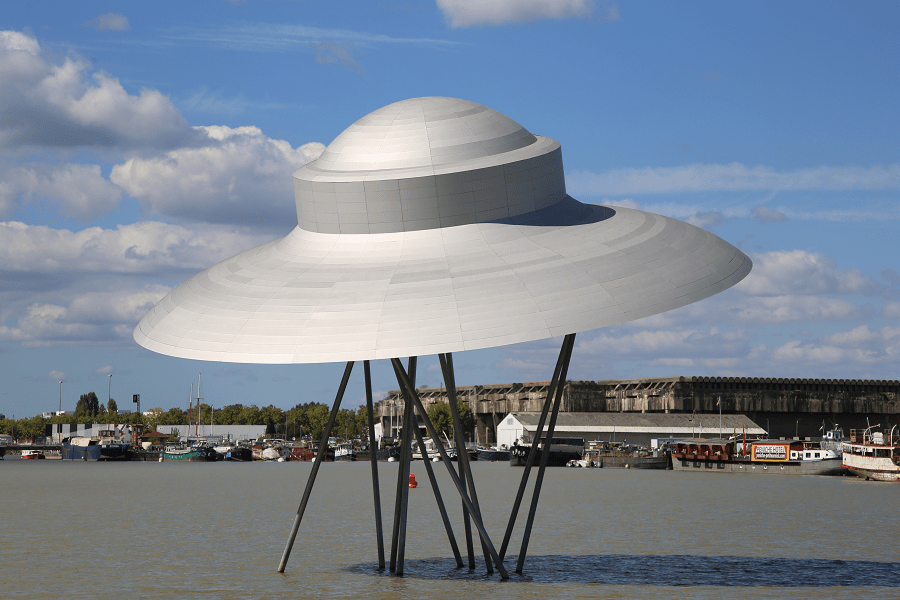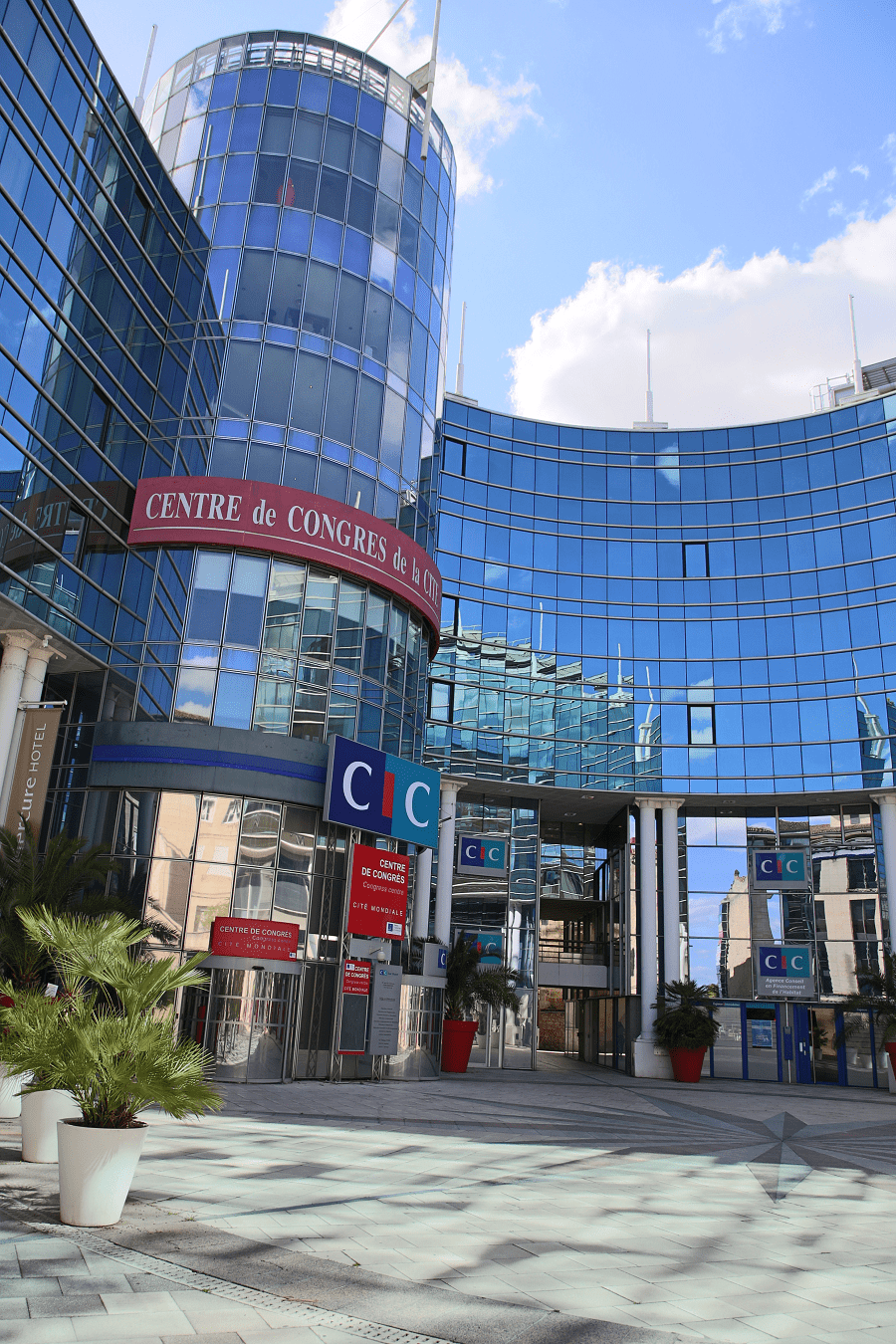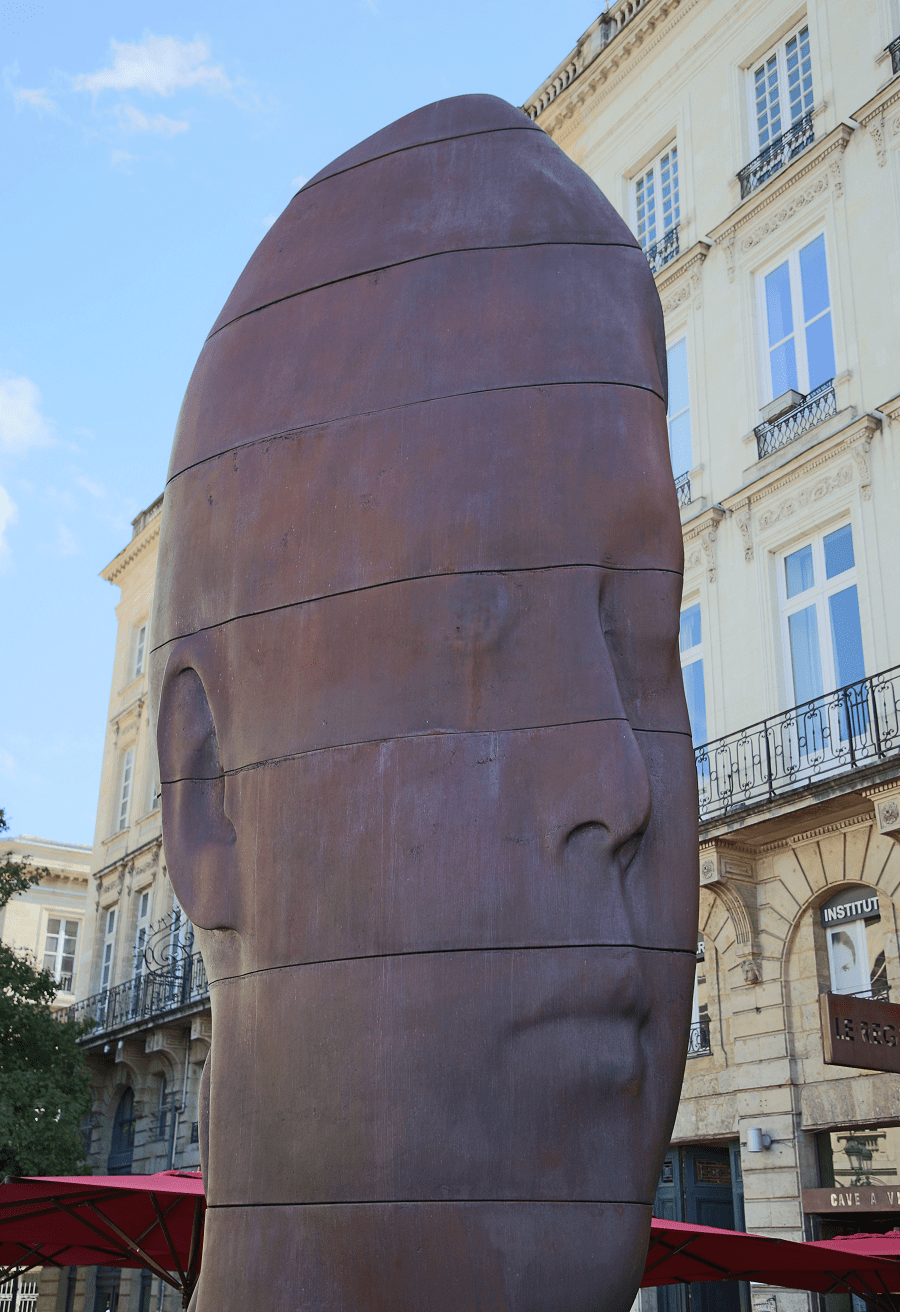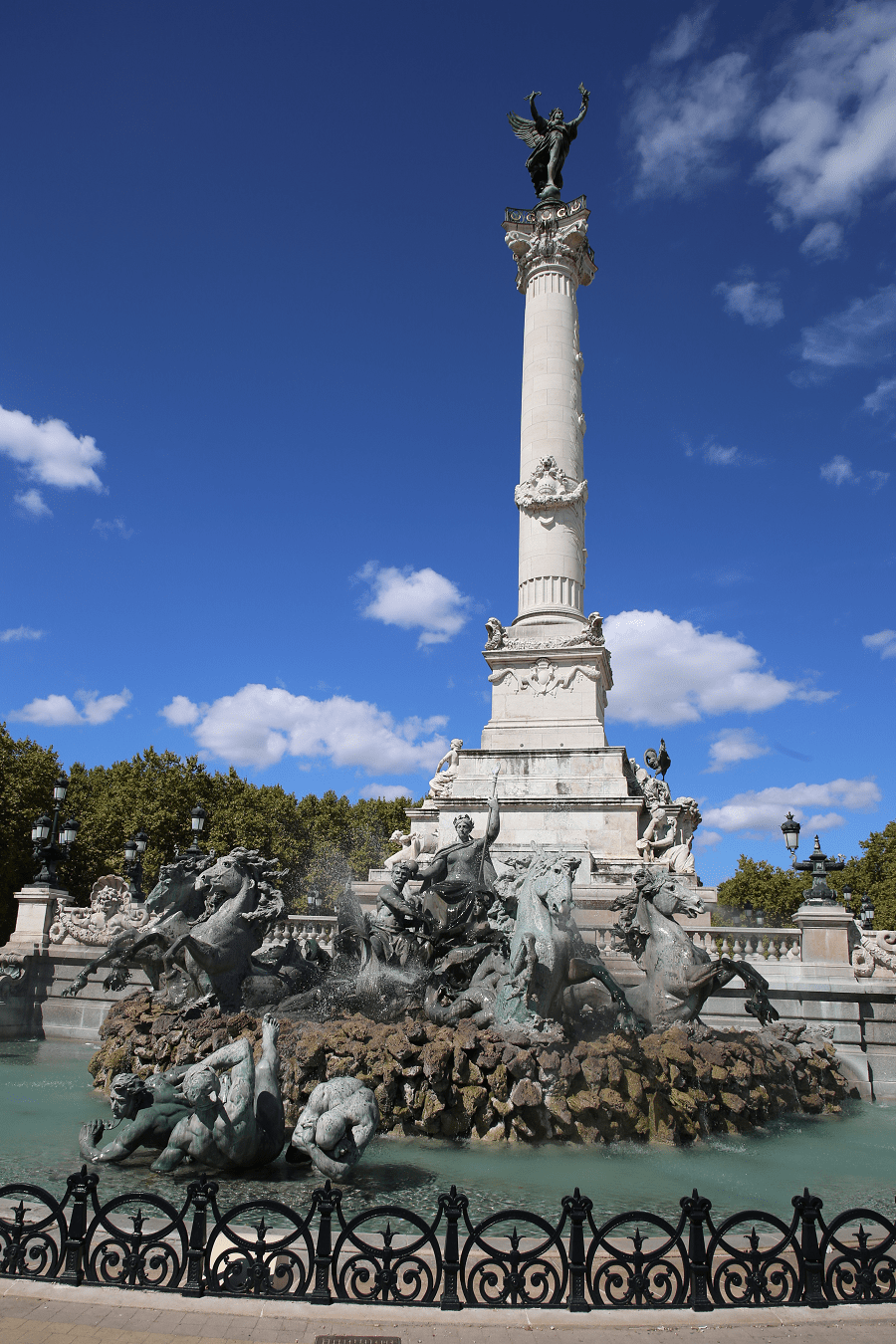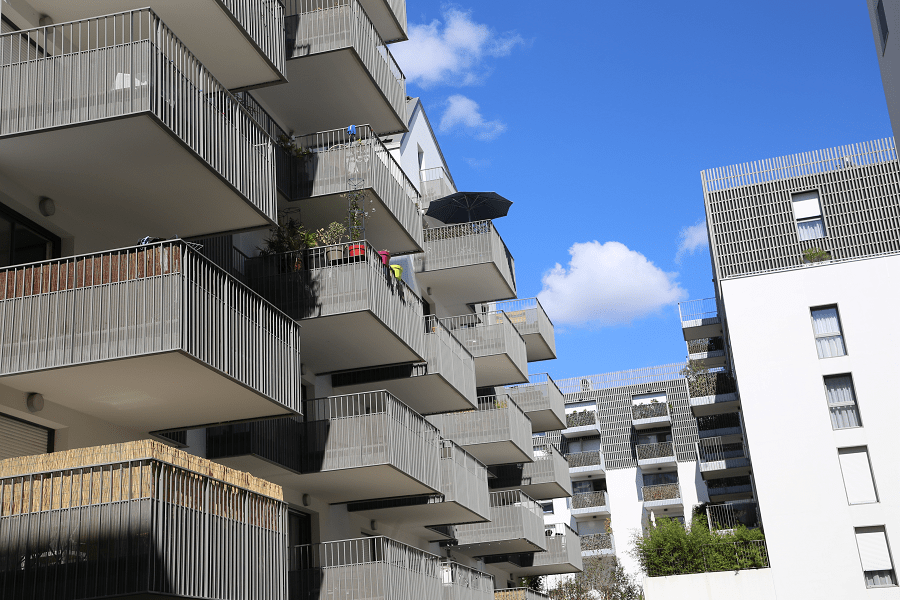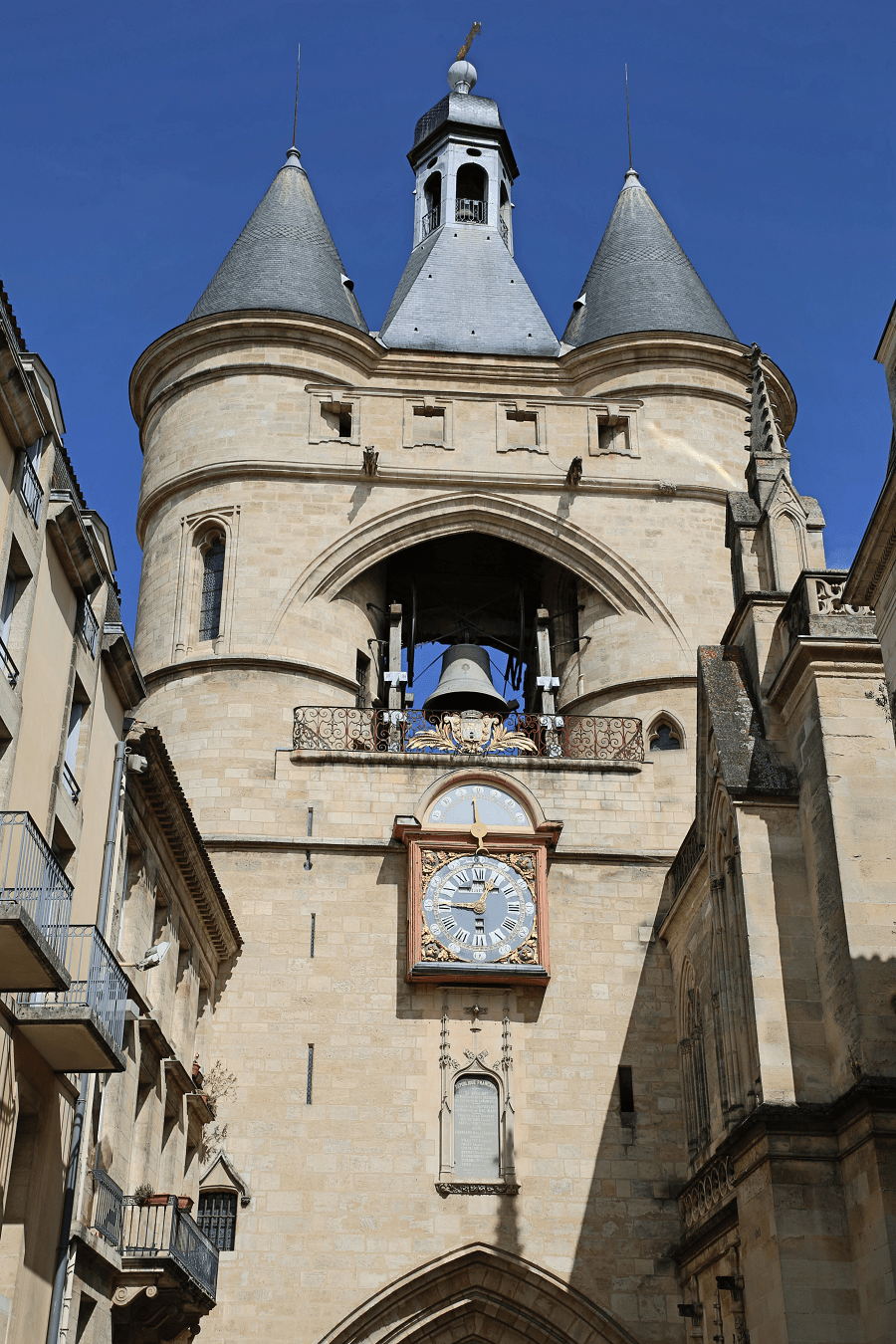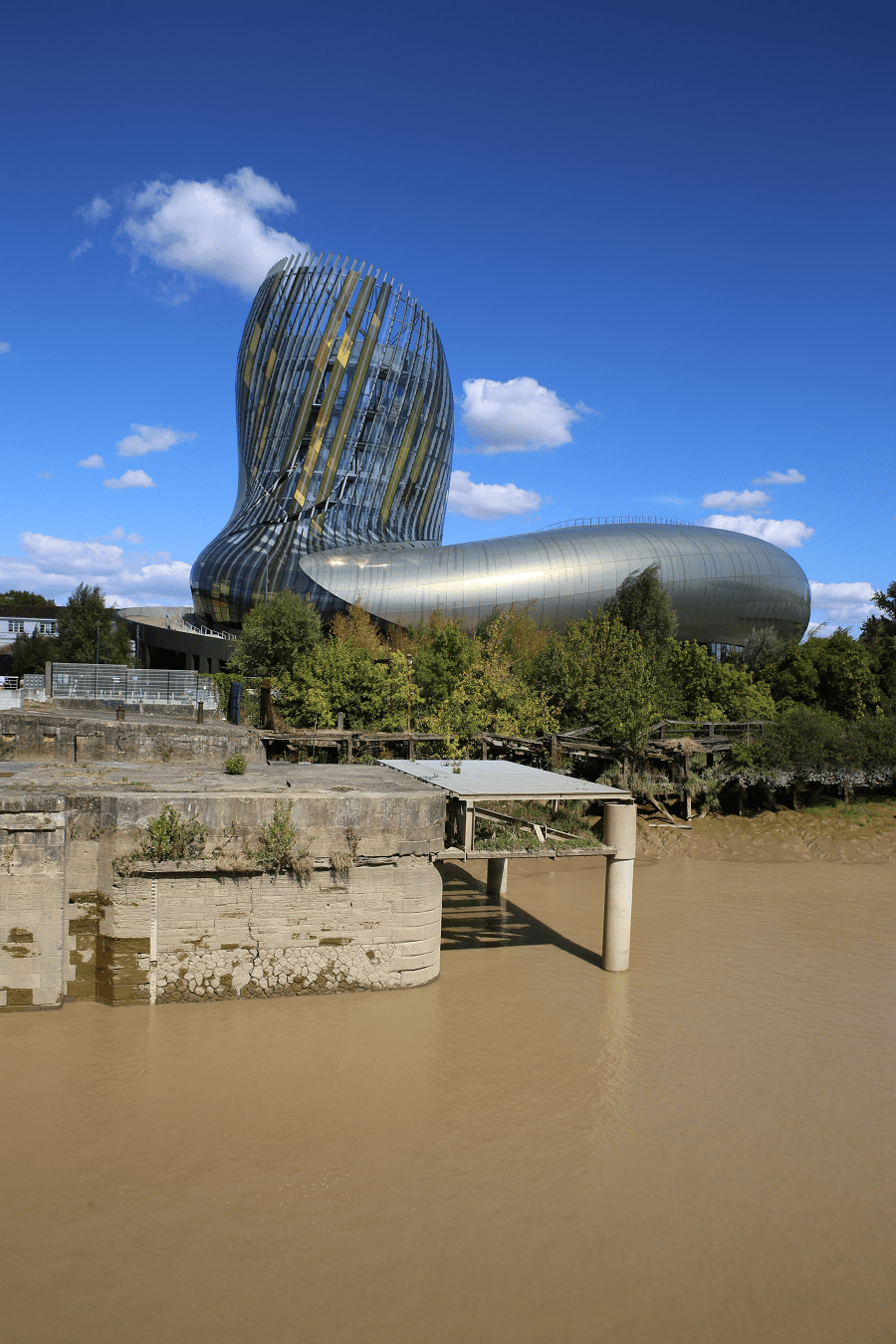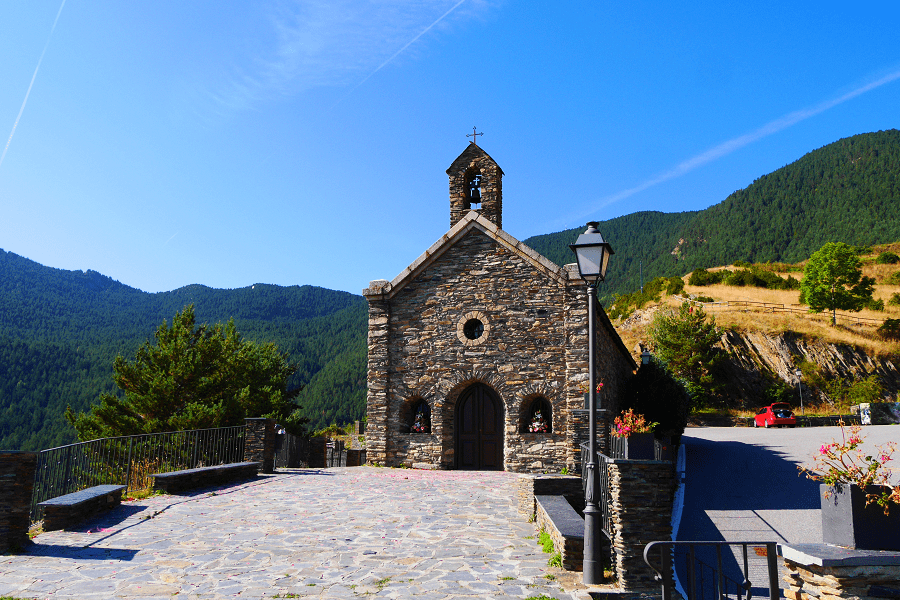Bordeaux (Fr. Bordeaux) is a port city on the Garonne in the Gironde department in Southwestern France.
An integral part of cultural Gascony, Bordeaux is located at the crossroads of the Landes Forest and the Atlantic Ocean. The Romans planted vines on the banks of the Garonne and introduced vines from the Basque foothills. Bordeaux’s central position between commercial, land and river routes in the heart of a rich wine region has made it one of the main cities of France, with royal palaces, rich abbeys and a cathedral.
During the twelfth century, Bordeaux became one of the first centres in Europe for education and international trade. In the seventeenth and eighteenth centuries, Bordeaux became the first port of the Kingdom of France and the third slave port.
Crossed by the Garonne and bordering the Atlantic Coast, the metropolis of lights has been staging since the eighteenth century its blond and golden facades, its prestigious courtyards and monumental squares, as well as its lively streets accompanied by its French gardens.
World capital of wine thanks to its prestigious Bordeaux chateaux and vineyards that feature the slopes of the Gironde, the city is also considered to be one of the centres of gastronomy and business tourism for the organization of international congresses.
It is also a central and strategic hub of the aeronautics, military and space sector, bringing together several international companies such as Dassault Aviation, Ariane Group, Safran and Thalès. A link with aviation established in 1910, the year of the first flight over the city by an airplane. The pilots Ruchonnet and Daudret were at the origin of this performance on 24 August 1910.
The city is an important crossroad of knowledge through university research, it is home to one of the only two megajoule lasers in the world, as well as an important university centre of nearly 100,000 students in the Bordeaux metropolis.
Finally, Bordeaux is an international tourist destination for its exceptional architectural and cultural heritage bringing together more than 350 historical monuments which make Bordeaux, after Paris, the city with the most monuments classified or registered as historical monuments in France.
The metropolis has also received numerous awards and rankings by international organizations, such as in 1957, Bordeaux was awarded the Europe Prize for its exceptional efforts in transmitting the European ideal. And in June 2007, with more than 1,810 hectares, it was the largest protected city in the world (including UNESCO list with the Port of the Moon).
Tourism and main attractions
Nicknamed “the Sleeping Beauty”, Bordeaux is also classified as a City of Art and History. It is the second city in France with the largest number of listed monuments, just after Paris. The protected area is thus one of the largest in the country (150 ha).
Bordeaux has welcomed around six million visitors every year since 2015 from all over the world, while barely ten years ago only 2.5 million tourists came to Bordeaux. Bordeaux is also the second French cruise stopover on the Atlantic coast.
TOP sights must see in Bordeaux
Saint-André cathedral was consecrated in 1096 by Pope Urban II. It was rebuilt in the Gothic style from the 12th to the 16th century. The Pey-Berland tower, named after Archbishop Pey Berland, is the separate bell tower of Saint-André Cathedral. It is the subject of a classification as a historical monument by the list of 1862. It is also classified as a UNESCO World Heritage Site.
The cathedral has hosted many structuring events in the history of France. In particular by the celebration in this church of several royal weddings, including in 1137, the marriage of Aliénor d’Aquitaine with the future Louis VII, king of the Franks and in November 1615 the marriage of Anne d Austria, Infanta of Spain and Louis XIII, King of France and Navarre.
The Saint-Michel Basilica is also one of the main places of Catholic worship in the city, in southwestern France. Built from the fourteenth to the sixteenth century, it is characteristic of the Flamboyant Gothic style. The church gave its name to the district in which it is located. Listed as a historical monument in 1846, the Saint-Michel church—which became a minor basilica in 1903—has been on the UNESCO World Heritage List since 1998 as part of the roads to Saint-Jacques-de-Compostelle in France.
The basilica shares with the Saint-André cathedral the particularity of having a bell tower independent of the sanctuary or campanile.
Rising to a height of 114 meters, it is considered the highest in the South of France and one of the highest in France. Its base retains a crypt which was used for a long time as an ossuary, then as an exhibition site for “mummies” exhumed in the nineteenth century during the development of Place Meynard, a former parish cemetery.
Place de la Bourse and its Mirror Water (Miroir d’Eau). Place de Exchange (formerly Place Royale), built in the eighteenth century, is an iconic place in Bordeaux’s life. It is located on the Bordeaux promenade in front of the famous Mirror Water, where you can cool off in case of extreme heat. This square, which takes the shape of an arc of a circle, is a good example of the development of Bordeaux in the eighteenth century, when the city became rich thanks to the slave trade.
The Place de la Victoire is the meeting point for Bordeaux students and is home to many bars and restaurants. It is on this square that the Faculty of Medicine of Bordeaux has been located since 1888. It is located on the border of the fortifications of the medieval city, there is still the Aquitaine Gate (Porte d’Aquitaine).
St. Peter’s Quarter is located in the heart of Old Bordeaux, dating back to the end of antiquity and the Middle Ages. Around you will find several places (St. Peter’s Square, Parliament Square, Camille Julian Square) with terraced cafes and restaurants.
Le Grand-Théâtre de Bordeaux. This is one of the emblematic buildings of Bordeaux, it is located between the rue Saint Catherine and the Quinconces, on the Place de Comédie, not far from the posh districts of Bordeaux. It was built at the end of the eighteenth century by the architect Victor Louis, who echoes the antique style of the colonnades. Ballets and symphony concerts are held in the 1000-seat hall.
Museums
The Musée des Beaux-Arts is one of the oldest museums in France, which explains the breadth and diversity of its collections, especially for the nineteenth and twentieth centuries. Among the state deposits, there are some major paintings such as L’Embarquement de la duchesse d´Angoulême by Gros, La Chasse au Lion by Delacroix and Le Rolla de Gervex.
There are also remarkable paintings by Rubens, Véronèse, Titien, Van Dyck, Corot, Bouguereau, Gérôme, Matisse, Dufy or Picasso …
The Aquitaine museum inherited from the collections of the former Lapidary Museum created around 1783 by the Academy of Bordeaux at the request of the intendant Dupré de Saint-Maur to bring together the Roman remains with the latest masterpieces.
Since 1962, it has evolved into a museum of regional history, archaeology and ethnography: remains from prehistoric times, Roman and Paleo-Christian antiquities from the city of Burdigala, medieval collections, ethnographic collections, etc. It also houses the collections of the former Goupil museum, conservatory of industrial image.
The Museum of decorative arts and design is housed in the hotel de Lalande. Built in 1779 by the Bordeaux architect Étienne Laclotte, for the parliamentarian Pierre de Raymond de Lalande, the museum houses rich collections of French decorative arts, and more particularly Bordeaux, from the eighteenth and nineteenth centuries, as well as collections of paintings, engravings, miniatures, sculptures, furniture, ceramics, glassware, silverware, etc.
The Natural history museum is housed in an eighteenth century residence in the public garden of Bordeaux. It lives to the rhythm of thematic exhibitions that display specimens from the permanent collections.
The Capc contemporary art museum, formerly the centre of contemporary plastic arts in Bordeaux, is located in the superb setting of a former grain warehouse. It deploys a collection from the late 1960s to current generations, bringing together more than a thousand works and 140 artists.
The National Customs Museum is housed in one of the magnificent pavilions on the Place de la Bourse. It traces customs history and illustrates the missions of brigades and offices.
The Jean-Moulin National Center for Documentation on the Second World War presents documents and objects which perpetuate the memory of this recent period of our history.
The Musée d’ethnographie de Bordeaux (MEB), created at the end of the nineteenth century, brings together heritage collections that cover the entire anthropological field of techniques affecting social and religious life for Africa, Asia and Oceania.
The Musée des Compagnons du Tour de France retraces with approximately 500 documents and objects, the history of companionship, of working-class life in Bordeaux and in the region.
The Bordeaux Wine and Trade Museum was opened at the initiative of the Bordeaux Historia Vini association on 26 June 2008 in the Chartrons district. In three semi-underground cellars, the museum presents a collection of unique historical objects, multiple testimonies from the past and the present with a number of documents and explanatory panels retracing the trade in Bordeaux wines: the evolution of the trade of merchant, since the privilege of Bordeaux wines dating from the Middle Ages to the present day, including work in the cellars and exports.
The Goupil Museum preserves the Goupil house collection, a dynasty of Parisian art publishers active from 1827 to 1920. The collections are divided into three areas: prints, photographs and archives.
The Cité du Vin is a museum as well as a place of exhibitions, shows, movie projections and academic seminars on the theme of wine located in Bordeaux, France. Its official opening by the President of France François Hollande and Alain Juppé took place on May 31, 2016.
Culture and festivals
During the year, Bordeaux hosts several music and film festivals ranging from the international festival of classical music and organ, to reggae and underground music with the Reggae Sun Ska Festival. Other festivals are organized during the spring and summer period such as the Bordeaux Congo Square, the Bordeaux Jazz Festival, the Bordeaux Rock Festival and the Festival Relâche.
Other film festivals are in the spotlight such as the international festival of feminine cinema in October, the cut short festival in April, and the European short film festival.
The metropolis also organizes and hosts several cultural events, with each one more eclectic than the next. Like cultural events such as Evento: Exhibition of contemporary works in the city, L’Escale du livre between March and April, Chahuts – Storytelling and speech arts festival (mid-June in the Saint-Michel district), Vinexpo and Novart in November which showcases local artists from the metropolis.
Finally, the year is punctuated by various festivals and events such as the Carnaval des deux rives, which occurs during the first weekend of March and has existed in its current form since 1996. The Pleasure Fair which is the largest funfair in Aquitaine. It takes place the last three weeks of October and the first three weeks of March on the Place des Quinconces. The International Fair of Bordeaux, Art Chartrons, which represents a course of Contemporary Art in Bordeaux in collaboration with CAPC Contemporary Art Museum of Bordeaux, is held twice a year in the fall and in the spring.
The Wine Festival on the Quays and the Place des Quinconces, alternating every other year with the River Festival, embody the largest festivals in the South-West by hosting many Vessels, concerts relating to world music and by its two opening and closing fireworks.
During the same period, the people of Bordeaux took advantage of the Epicuriales for two weeks at the end of June, allowing them to display Bordeaux gastronomy at various concerts. The summer festival Dansons sur les quais is held throughout July and August on the quays of Bordeaux. The end of the year ends with the Christmas Market.
Gastronomy, wines and restaurants
Bordeaux has many specialties, such as bouchons (chocolate in the shape of plugs), crunchy Bordeaux (puffed tiles with hazelnuts), Médoc vine shoots (candied orange coated with chocolate) and Bordeaux canelé, which is said to have been invented in the eighteenth century by the nuns of the Annonciades convent. At the time, it was a candy in the form of sticks called canelats or canelets. Some people notice that these little cakes made by the nuns could be linked to the history of Bordeaux and wine. Indeed, an important stage in winemaking is called fining. It consists of filtering the wine in vats with traditionally egg white. This expensive process was still used by many castles and this step saw all the staff of the castles breaking eggs and separating the whites from the yolks that were given to the Little Sisters of the Poor to bake cakes.
Bordeaux gastronomy is obviously inherent in Bordeaux wines which are among the most famous and expensive in the world.
The production of the vineyard is varied: around 80% red wines (such as pomerol or pauillac) and 20% dry white wines (such as entre-deux-mers or pessac-leognan) or sweet (for example Sauternes or Cadillac), to which are added rosés, clairets, and sparkling wines (Crémant de Bordeaux). The existence of 38 different appellations within the vineyard is explained by the diversity of the terroirs; that is to say the types of soil, the grape varieties cultivated, and the cultivation and winemaking practices. With 117,200 hectares cultivated and a production of five to six million hectolitres of wine per year, the Gironde is the third French wine-growing department in terms of overall production after Hérault and Aude, but the first for AOCs in volume. La Cité du Vin embodies this gastronomic heritage through the prism of “the transmission, enhancement and protection of the cultural, universal and living heritage of wine”.
The Bordeaux main dishes are the entrecôte à la bordelaise (with a wine sauce), crayfish à la bordelaise, veal liver à la bordelaise, lamprey à la bordelaise (with red wine sauce).
The town is also renowned for the caviar of the Gironde estuary, which has only been exploited since the interwar period; sturgeon is a fish that has always been present in Gironde and mustard from Bordeaux.
There are 32 best restaurants according to the Michelin list but only seven have stars:
- Le Pressoir d’Argent – Gordon Ramsay, 2 place de la Comédie, 150 – 215 EUR • Modern Cuisine (two stars)
- L’Oiseau Bleu, 127 avenue Thiers, 32 – 80 EUR • Modern Cuisine (one star)
- La Table d’Hôtes – Le Quatrième Mur, 2 place de la Comédie, 170 EUR • Creative (one star)
- Garopapilles, 62 rue Abbé-de-l’Epée, 40 – 95 EUR • Modern Cuisine (one star)
- Tentazioni, 59 rue du Palais-Gallien, 29 – 85 EUR • Italian (one star)
- Soléna, 5 rue Chauffour, 35 – 95 EUR • Modern Cuisine (one star)
- Le Pavillon des Boulevards, 120 rue de la Croix-de-Seguey, 35 – 140 EUR • Creative (one star)
Shopping
Bordeaux has many shopping options. In the heart of Bordeaux is Rue Sainte-Catherine. This pedestrian-only shopping street has 1.2 kilometers of shops, restaurants and cafés; it is also one of the longest shopping streets in Europe. Rue Sainte-Catherine starts at Place de la Victoire and ends at Place de la Comédie by the Grand Théâtre.
Transport and how to get to?
Airport
Bordeaux is served by International Bordeaux–Mérignac Airport, located 8 km from the city centre in the suburban city of Mérignac.
The airport welcomes Air France, EasyJet, Ryanair and Volotea. It is the 8th French airport and the 6th outside the Paris region.
Railways
The main railway station, Gare de Bordeaux Saint-Jean, near the center of the city, has 12 million passengers a year. It is served by the French national (SNCF) railway’s high speed train, the TGV, that gets to Paris in two hours, with connections to major European centers such as Lille, Brussels, Amsterdam, Cologne, Geneva and London. The TGV also serves Toulouse and Irun (Spain) from Bordeaux. A regular train service is provided to Nantes, Nice, Marseille and Lyon. The Gare Saint-Jean is the major hub for regional trains (TER) operated by the SNCF to Arcachon, Limoges, Agen, Périgueux, Langon, Pau, Le Médoc, Angoulême and Bayonne.
Shortest distances by car:
From La Baule-Escoublac (tolls): 4 h 11 min (425 km) via A83 and A10
From Saint-Nazaire (tolls): 4 h 9 min (411 km) via A83 and A10
From Nantes (tolls): 3 h 25 min (347 km) via A83 and A10
From Cognac (tolls): 1 h 39 min (122 km) via A10
From Angoulême: 1 h 34 min (120 km) via N10
From Arcachon: 1 h 1 min (66.1 km) via A660 and A63
From Royan: 1 h 46 min (124 km) via D730 and A10
From Les Sables-d’Olonne (tolls): 3 h 23 min (336 km) via A10
From Biarritz (tolls): 2 h 15 min (199 km) via A63
From Bayonne (tolls): 2 h 4 min (185 km) via A63
From Dax (tolls): 1 h 49 min (147 km) via A63
From Saumur (tolls): 3 h 26 min (305 km) via A10
From La Rochelle: 2 h 4 min (184 km) via A10
From Toulouse (tolls): 2 h 35 min (245 km) via A62
From Carcassonne (tolls): 3 h 21 min (335 km) via A61 and A62
From Monaco (tolls): 7 h 45 min (824 km) via A8 and A62
From Nice (tolls): 7 h 30 min (803 km) via A62
From Cannes (tolls): 7 h 17 min (776 km) via A62
From Saint-Tropez (tolls): 7 h 17 min (748 km) via A62
From Marseille (tolls): 6 h 5 min (645 km) via A62
From Avignon (tolls): 5 h 26 min (572 km) via A9, A61 and A62
From Montpellier (tolls): 4 h 42 min (485 km) via A61 and A62
From Béziers (tolls): 4 h 6 min (423 km) via A61 and A62
From Perpignan (tolls): 4 h 17 min (449 km) via A61 and A62
From Narbonne (tolls): 3 h 50 min (393 km) via A61 and A62
From Andorra (tolls): 4 h 49 min (426 km) via A62
Main information
Area: 50 sq. km
Population: 255 500
Languages: French
Currency: euro
Visa: Schengen
Time: Central European UTC +1
GPS coordinates: 44°50′N 0°35′W



